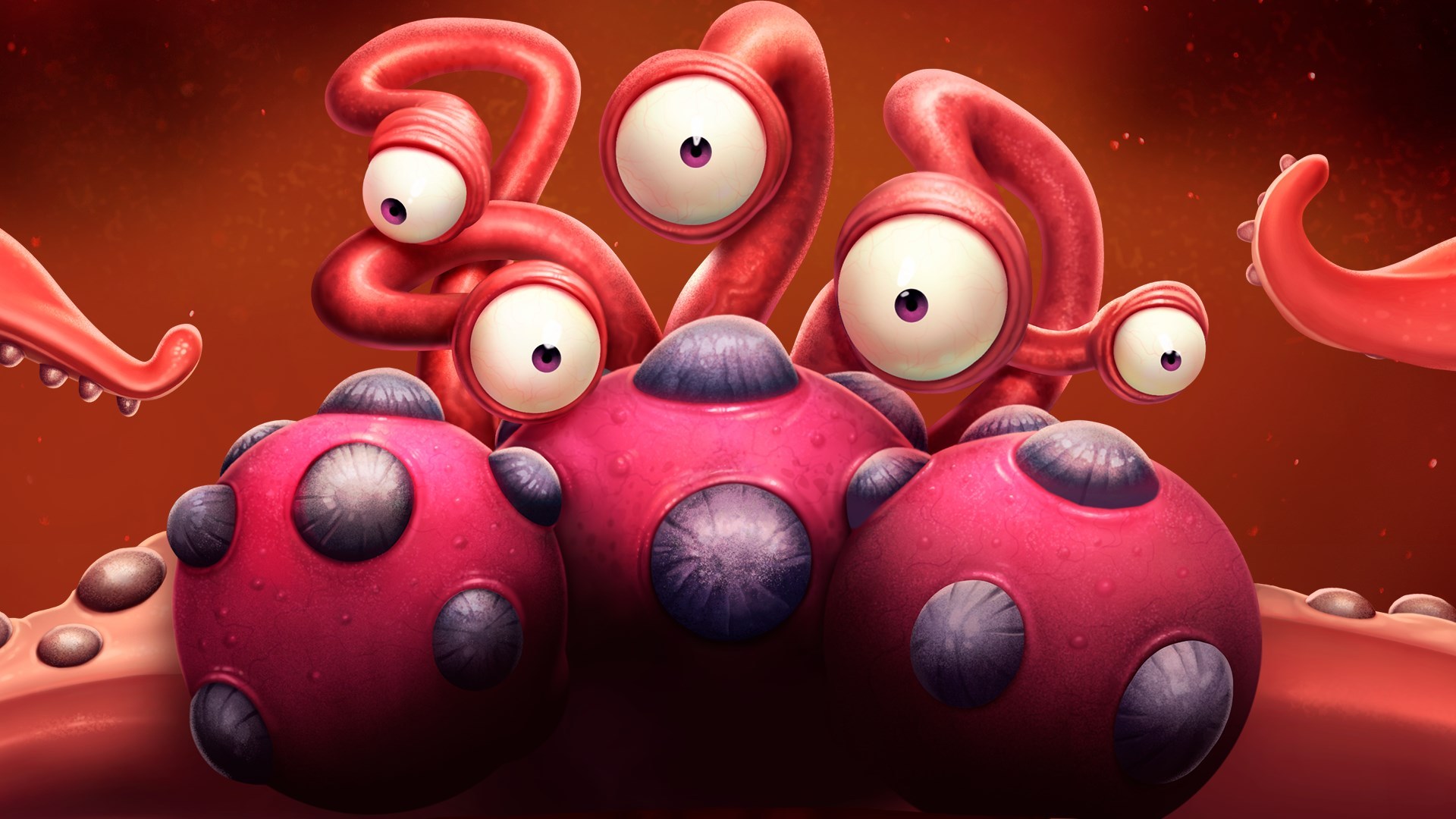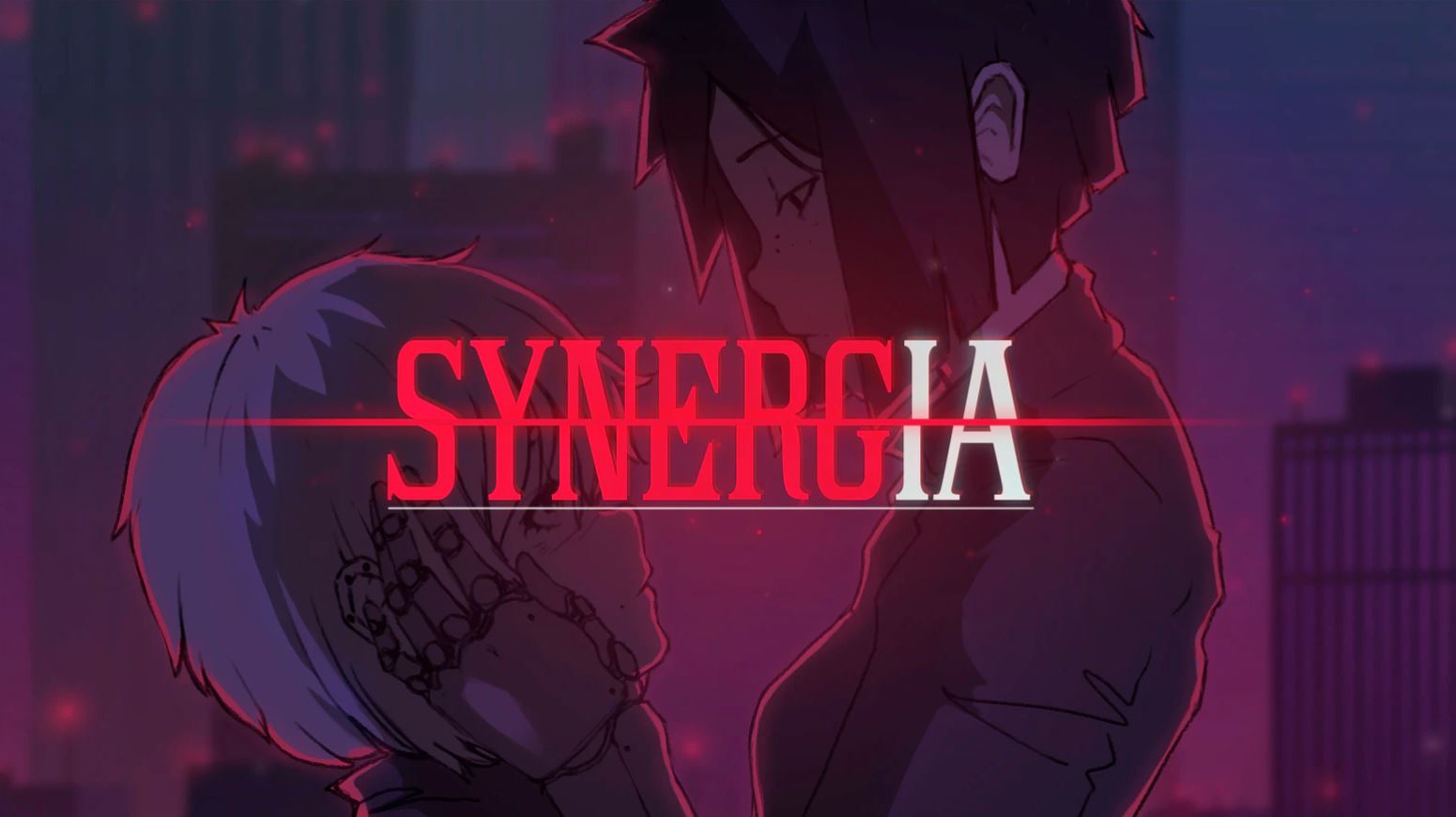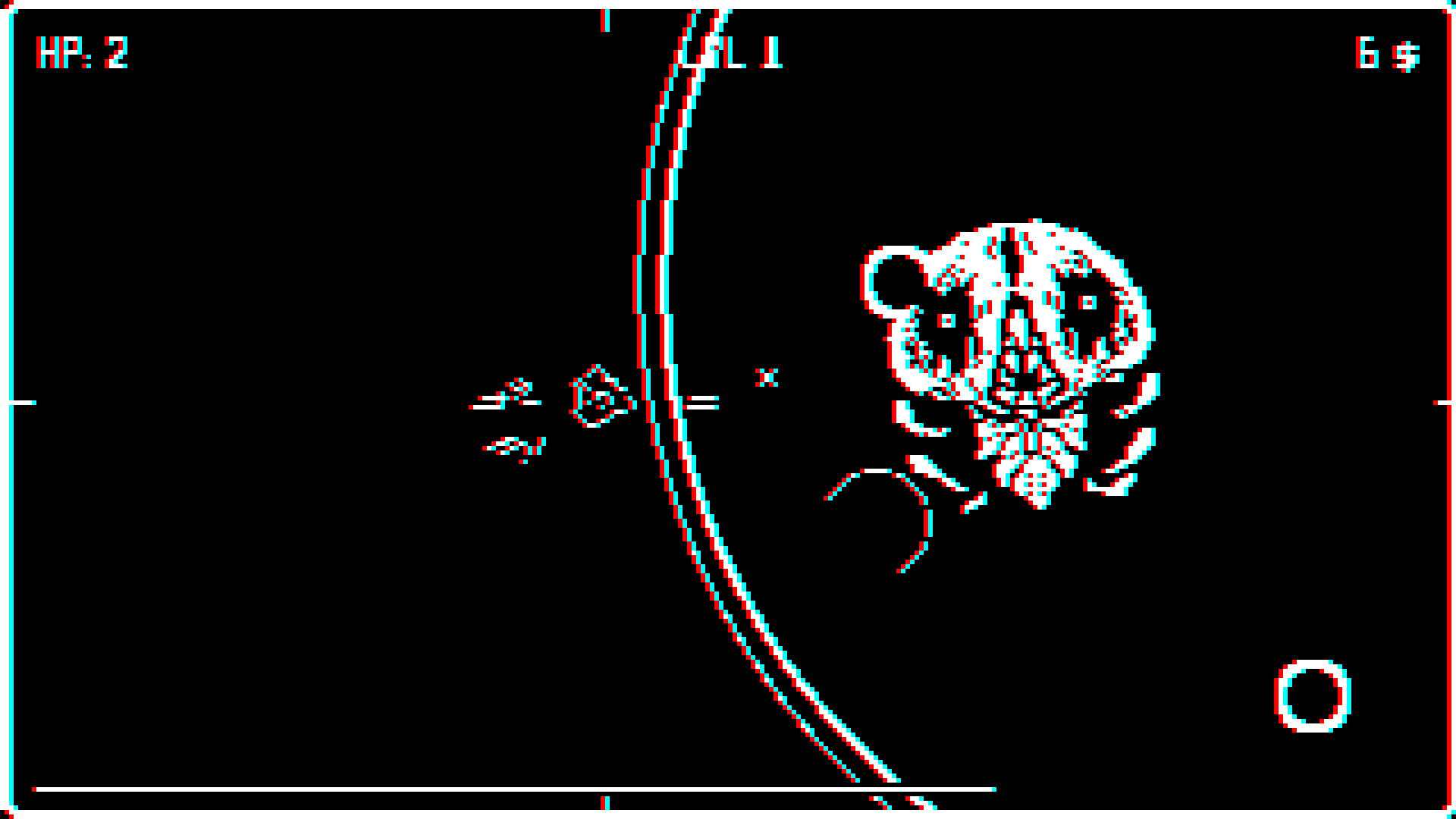Teratopia Review (Xbox One) – Fighting The Red Menace
A quick primer – Three types of oddball creatures lived in Teratopia. The blue ogre-like beasts, the green beings that look like sentient hedges and the orange snot monsters lived harmoniously alongside one another. They played, they had fun and they did so in peace. That was until one day when a fourth species, a red horde of squid…things led by a madcap but dangerous family, descend upon Teratopia and they snatch everyone up. Tucho, one of the blue ogre’s, is the last remaining being who sets out on a quest to free his friends and rid the world of this red menace.
That’s the premise to Teratopia, an action adventure brawler from Argentinian developers Ravegan and publisher Eastasiasoft.
Teratopia is played across a large open world that’s broken down into 13 different biomes. While I say ‘open world’, it’s not quite as open as that term would suggest. The different zones are linked to one another via platforms or pathways and progress is blocked by 11 boss battles. The first few zones are linear with only one way forward but as your progress further, these biomes open up and can have multiple bosses guarding numerous routes forward. After defeating a boss, the progress is saved and you can respawn at that position after dying. Like a forward operating base, only for weird monster things.
There’s nothing revolutionary in Teratopia in terms of game design that you won’t have seen before. From a fixed camera angle that migrates around the world as the player moves their creature, the most you’ll be challenged to complete is some tricky moving platform jumps. Elsewhere there are plants that act like canons or springs that bounce you around levels. Exploring, combined with these moments of platforming break up the most regular sections of the game – the combat.
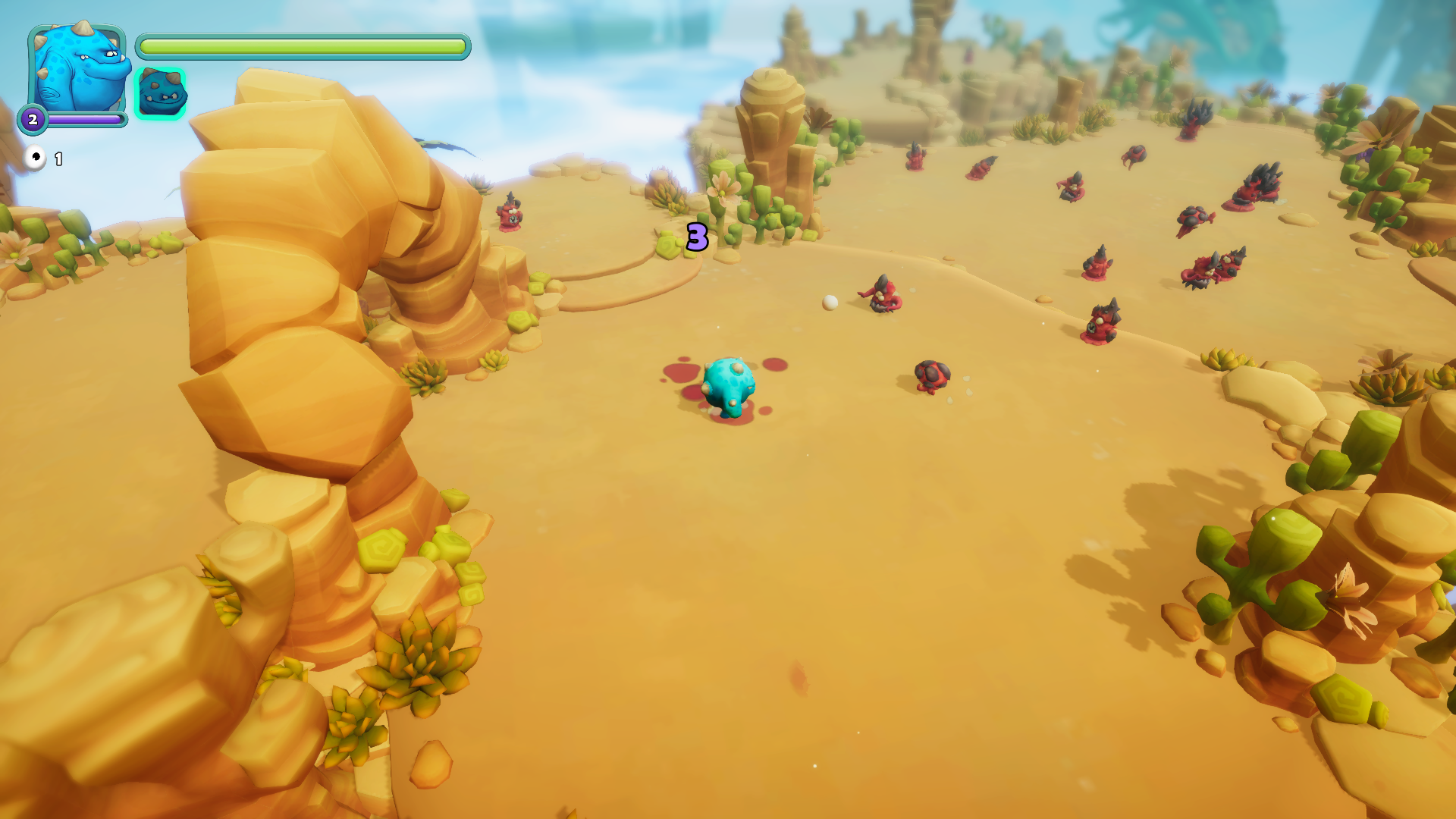
This is where the first and largest issue with Teratopia rears its ugly head; The combat is one dimensional and repetitive. There’s one button to attack which does a normal attack when simply pressed or a heavy attack when held down for a second (which doesn’t give the player anywhere near enough feedback to indicate when it’s fully charged, by the way). For much of the first few zones, everything between the boss battles is simply mashing X over and over and over. New enemy types are gradually introduced (there’s eventually a decent variety) which put up much more of a fight and will need you to dodge away from their signposted attacks or rebound their projectiles. Between these half seconds of self preservation however, it’s back to repeatedly pressing X. Because so much of Teratopia revolves around the combat, having fights on every other platform you reach, the repetition of the combat is truly highlighted. Thankfully, before the end of the game, the red meanies really start to put up a fight which demands more patience and less mindless button mashing.

As you vanquish the red menace, they drop their eyes. These bounce around like ping pong balls but can be collected when you get close to them. These eyes form a currency in the game. Certain routes are blocked by a hungry creature and in order to pass, you’ve got to feed it a prescribed number of eyeballs. I imagine this was supposed to act as some kind of progress blocker but if you replay an area a few times, you’ll have more than enough optical currency to pass any of these gates.
You begin the quest through Teratopia with Tucho. This is a tough, rock headed creature that punch, punch, punches until the health of any of the red squid being ahead of it is gone. Pretty mobile and durable, this starting character is your close combat monster and the easiest to use. Tucho can rescue 2 other playable friends that have been locked up around the world map. The first is called Benito, a long ranged species that fires barbs from its hands, and Horacio which is described as ‘a trickster’. The latter of these unlocks is the most difficult to use but with a bit of forethought can have enemies punching nothing but air while you hack into their rear. The differences in these 4 creatures doesn’t end with their attack types either. For example, Tucho rolls a short distance when he avades while Benito instantly teleports out of harm’s way. Using each character in a way to maximise their tactical advantages can make a frustrating boss much, much easier.
The trio of main monsters aren’t the only source of tactical choices in Teratopia either. As you defeat squid bosses, you rescue more of your friends. This grants the 3 main characters the ability to spawn in a limited number of AI controlled minions to do their fighting for them. These minions come in 5 different flavours – a melee type, ranged, engineer, wizard and tank – each of which offers their own strengths and weaknesses in certain situations. If you run into a massive wave of red enemies to fight, it’s often useful to throw out a few tank/melee types to slow them down and draw away some of the heat so you can mash X again. Similarly, if you’re in an area where there’s a turret standing idle, deploying an engineer will allow them to man it and rain down projectiles on any foe in range.
I do wish more thought had been applied to the way these minions are presented to the player in the onscreen HUD. Each of the 3 playable races in the game unlock these minion classes in a different order and if you’re prone to switching up between deaths like I was, It’s easy to lose track of which is which in the menu. Each minion shares the same aesthetic as the 3 playable characters but with very subtle changes that aren’t entirely clear. A little logo or icon when highlighting a minion class to show what they are would have done the trick. Instead, in the heat of battle, it’s all too easy to throw out a ranged mini-me rather than the engineer you wanted too. Because of this, the tactical play that could have been possible regularly goes out the window as you send everyone you have out to fight because one of them has to be the one you wanted.
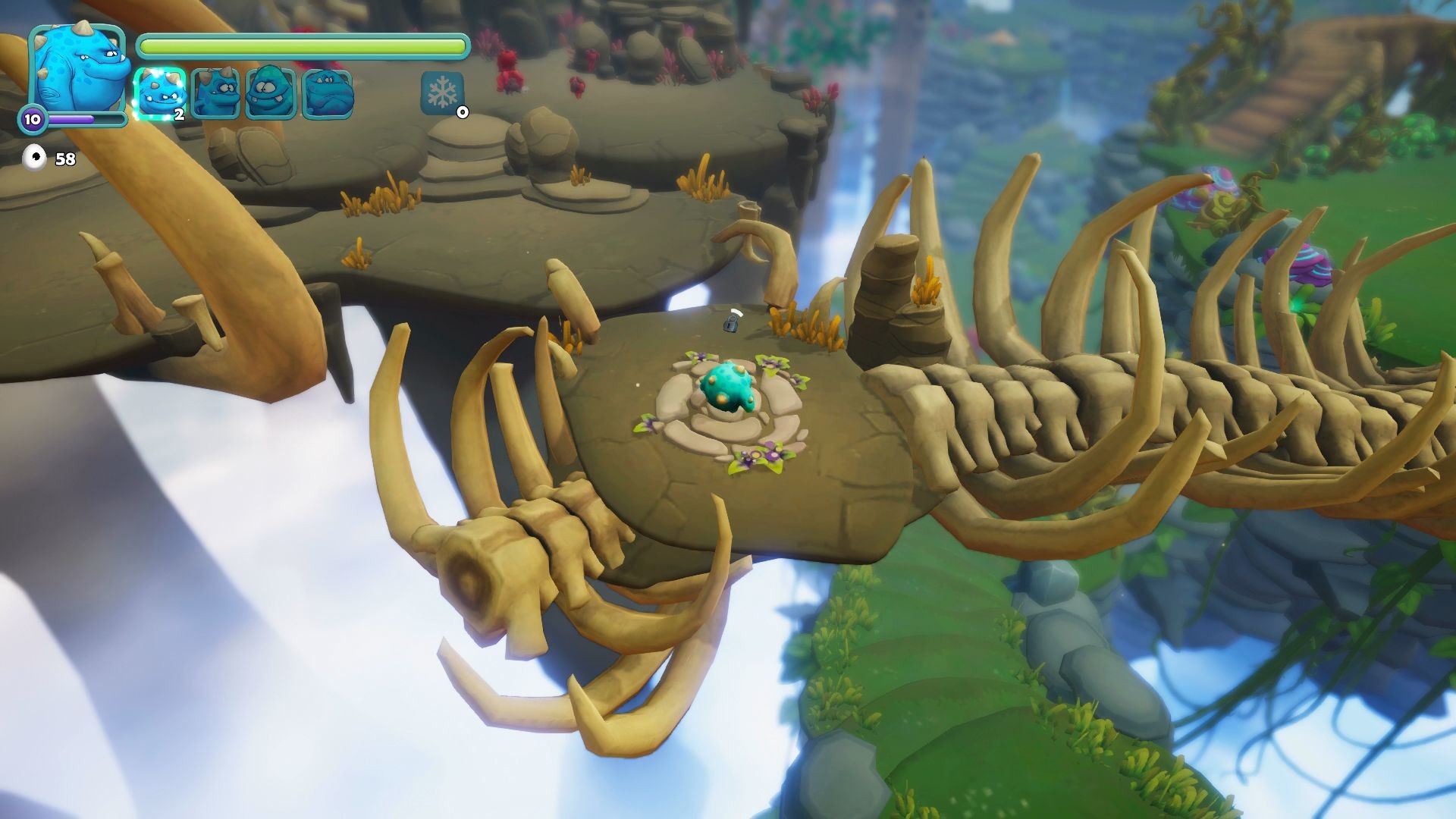
All of this is underpinned by an RPG levelling system which again compounds the repetition of the combat. Each red squid thing defeated grants experience (which is shared by all of the playable races, not just the active one). This experience culminates in levelling up. As you do so, new abilities are initially unlocked, like returning projectiles with a tap of Y and special but limited abilities. Eventually, these levels start to grant permanent buffs like +20% damage to attacks or +20% critical attack chance. Because of the open world-esque nature of the game, there’s the possibility to become either overpowered because of these buffs or underpowered, requiring an experience grind. I’ve been in both positions during my time with Teratopia.
Having said all of this, you’re probably expecting me to round off this review with a negative slant. If it wasn’t for the boss battles that would probably be true.
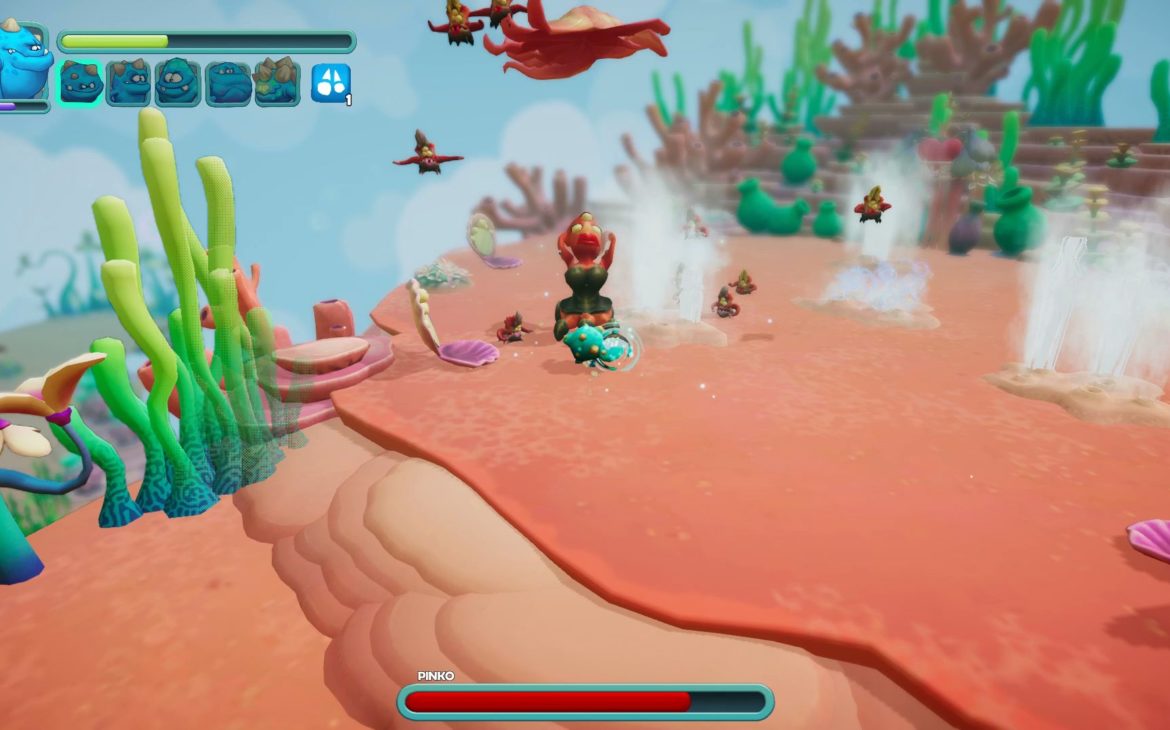
The 11 boss battles in Teratopia, scrapping with the royal family of the red squid species, are the best parts of this game. Each boss is different from the rest and almost all of them require a unique strategy to overcome. Whether it’s using the minion spawns to trigger a trap or luring the boss into particular parts of the arena during timed events, there’s a tactic to use against each boss and finding out how to defeat them is the most pleasure I had with the whole game.
There’s something of an odd charm to Teratopia too. The world itself isn’t exactly detailed or bursting with character but it’s colourful and easy on the eye. All of the species in the game have plenty of goofy personality, whether it be enemies, the playable creatures or the army of spawn-able minions.
It’s so unfortunate that so much of Teratopia between the boss fights feels like monotonous, repetitive filler. The platforming is basic, the combat often feels like just mashing X and the frame rate can occasionally tank which makes it uncomfortable to play. There was certainly potential hidden in this game but it falls short of being realised.
A series of challenging, varied boss battles are the saving graces for Teratopia, an action adventure game that’s repetitive and uninspired far too often.

Teratopia is available now on Xbox One (review platform), PS4, PC via Steam and Nintendo Switch.
Developer: Ravegan
Publisher: eastasiasoft
Disclaimer: In order to complete this review, we were provided with a promotional copy of the game. For our full review policy, please go here.
If you enjoyed this article or any more of our content, please consider our Patreon.
Make sure to follow Finger Guns on our social channels –Twitter, Facebook, Twitch, Spotify or Apple Podcasts – to keep up to date on our news, reviews and features
